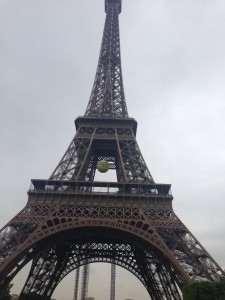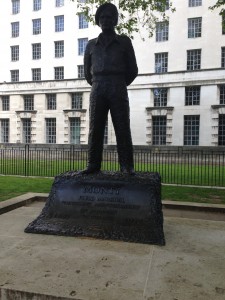
Germany has a strong remembrance of its World War II past. Unlike France, it does not see World War II as simply an extension of World War I. In fact in the German Historical Museum, World War I has a very small exhibit and the guide says it is normally glossed over in school. However when remembering World War II history there is a cultural struggle between separating Germany and the Nazis regime and being ashamed of the past.
The German Historical Museum had a lot of information about the formation of the Nazis party and how it came to power. There were very few times in the museum that talked about Germany in a negative life. Most of negative aspects were described as being perpetrated by the Nazis state. The museum skips the battles in the war and instead highlights the height of the German empire and then the downfall. Although there was a section highlighting the Holocaust, it was the only section where the descriptions of the artifacts were not in English, which seemed to indicate shame. Also, there has been some discussion as of late to rename the 1936 Olympic Stadium after Jesse Owens. This indicates that the Germans intend to keep the memory of the past visible in society, which is a shift in ideology, because immediately after the war there was a period of silence when the war was not talked about.
The guide at the museum said that it was illegal to print a copy of Mein Kampf. However reading about the past is important to preventingthe same mistakes in the future. Giving power to a book is a mistake, because children grow up thinking that it is more than just a book. At Sachsenhausen, a concentration camp outside of Berlin, we learned that it is a mandatory part of the curriculum for students to visit a concentration camp. Although it is important for children to learn about the past I think that making it a mandatory trip somehow places the blame on future generations. The past of the United States is not without incident and yet we do not shift the burden to the next generation. As the next generation of German children grows, they risk growing up under the fear that this level of cruelty could happen again instead of learning from the past and then moving forward.



